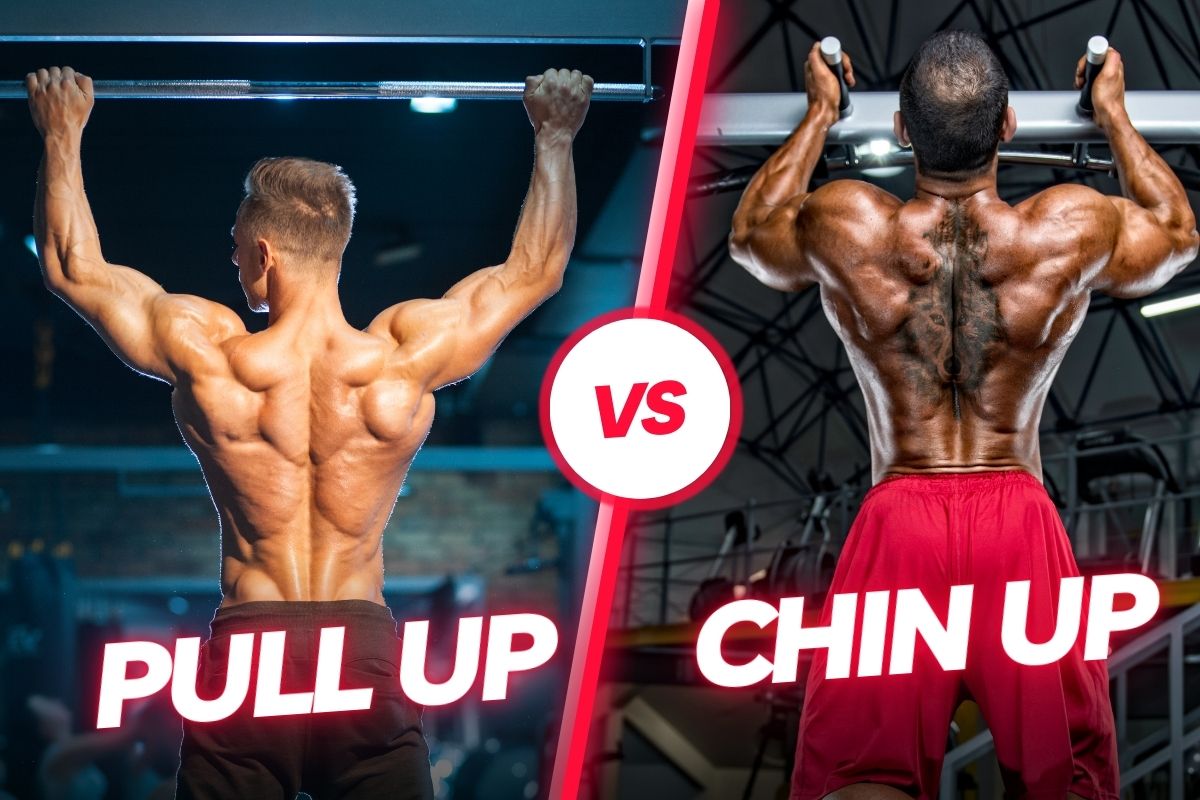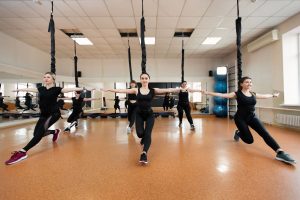Which workout do you think is better: pull-ups or chin ups? These two exercises might look alike, but they are different in technique and overall execution. If the goal is to build muscles, it’s helpful to understand what each movement accomplishes. We will discuss pull up vs. chin up in detail in this article. You will know which exercise is easier, which one fits your routine, and which muscle group it works on.
What Is a Pull Up?
Hanging and Lifting Your Body
A pull up is an upper body strength exercise in which a person hangs on to a pull up bar, grasping it with both hands in an overhand grip, then pulls their body upward to the bar until their chin is level with it. In this case, the person’s weight is used to strengthen the upper body.
Muscles Worked
Your back, including the lats (latissimus dorsi), is one of the most important muscles used in pull ups. They also work your biceps, shoulders, and forearms. Additionally, your core muscles engage to stabilize your body during the movement.
Benefits of Pull-Ups
- Strength Building: Pull-ups are effective for building upper-body strength.
- Improved Posture: Strengthening back muscles can help improve posture.
- Convenience: They require minimal equipment—just a sturdy bar.
- Functional Fitness: Pull-ups mimic movements used in daily activities and sports.
Getting Started
It’s perfectly normal that you might not be able to complete a single pull-up right away. If you’re just starting, you can start off with assisted pull-ups, such as using a resistance band or a pull-up machine. With consistent effort and adding to the number of repetitions over time, you’ll gain the strength needed to achieve the pull up mark.
What Is a Chin-Up?
The Basic Move
Chin-up is a term that describes a form of bodyweight exercise in which a person pulls themselves up while suspended from a bar. With this exercise, the palms face one another, instead of facing the body, like with pull ups. You pull upwards until the chin is at the level of the bar, then return back to the original position slowly.
Which Muscles It Works
Chin-ups mainly work your biceps (the muscles on the front of your upper arms) and your upper back. You also use your shoulders and core muscles to help you stay steady while going up and down.
Why People Do Chin-Ups
- Bigger arms: Chin-ups are best for increasing resistance to bicep muscles and bulking them up.
- Upper body strength: Chin-ups will aid you in gaining upper body strength without the reliance on weights.
- Easier to analyze progress: Changes can be monitored through counting repetitions and noticeable increments in muscle strength over time.
- Good for your posture: Help maintain balance and strong muscles in your back.
Getting Started with Chin-Ups
If chin-ups feel hard at first, don’t worry. Most beginners can’t do them right away. You can start by using a band to help lift some of your weight. You can also ask someone to help or use a gym machine designed for assisted chin-ups. Start slow and build up your strength.
Pull Up vs. Chin Up – What’s the Difference?
The Way You Hold the Bar
The greatest disparity between pull-ups and chin-ups is the grip on the bar.
- With pull-ups, your palms face away from you.
- With chin-ups, your palms face toward you.
This simple change in hand position changes which muscles you use the most.
Muscles That Work the Hardest
Both exercises improve the upper body but target different muscle groups.
- Your upper back, shoulders, and lats (big muscles on the sides of your back) will be engaged during pull-ups.
- The front of your arms (biceps) will be engaged during chin-ups, along with your upper back, but at a lesser rate.
If you want to grow your arms, chin-ups help more. If you want a wider back, pull-ups do the trick.
Which One Feels Harder?
For most people, pull-ups feel harder than chin-ups.
That’s because in chin-ups, your biceps help you a lot, making the lift feel easier. Pull-ups need more back strength and less help from your arms.
So if you’re just starting out, you might find chin-ups easier to do first.
Shoulder and Wrist Comfort
- Some people find chin-ups are easier on their shoulders and wrists. The underhand grip (palms facing you) can feel more natural.
- Pull-ups, on the other hand, can be a bit tougher on the joints, especially if your shoulders are tight or if you’re not warmed up properly.
Which One Should You Do?
You don’t have to choose just one. Both are good, and they work your body in different ways.
- If you want to build arm strength, start with chin-ups.
- If you want to build back strength, practice pull-ups.
Doing both gives the best results.
Conclusion
As two excellent exercises for strength training your upper body, pull-ups and chin-ups differ in the grip position and muscles engaged in the exercise. Your arms will benefit more from chin-ups, while your back will benefit more from pull-ups. To achieve maximum results, both exercises can be included in your workout. Experiment with each, and you will know which one suits your body and objectives better.











